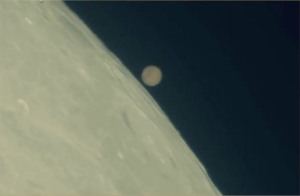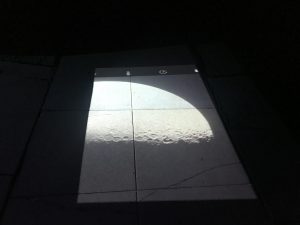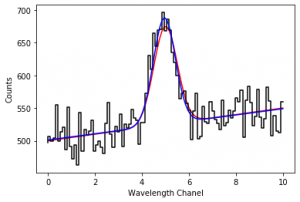
Egress of Mars from behind the moon as seen through the 60-inch telescope at Mount Wilson. December 7, 2022 17:30 PST.
On December 7th 2022, I cashed in any and all credits I had with the weather gods. It’s a superstitious thing to say, but there’s still a tiny irrational part of my brain that thinks that way. But it was worth it to be able to do a live stream of the occultation of Mars by the Moon.
A couple of months prior, we were getting toward the end of our observing season at Mount Wilson Observatory. Mars was just starting to peak out from the mountains to the East at the end of our sessions and I wondered when it was next at opposition, a time when Mars tends to be big and bright. Pulled out my phone, launched SkySafari and asked it to take me to the date of opposition. It took me to Wednesday, December 7th at 20:26:05 PDT, and centered the view on Mars. And there was the Moon, less than half a degree East of Mars. That’s when I first realized there was going to be an occultation (one celestial body passes in front of another). Continue reading




